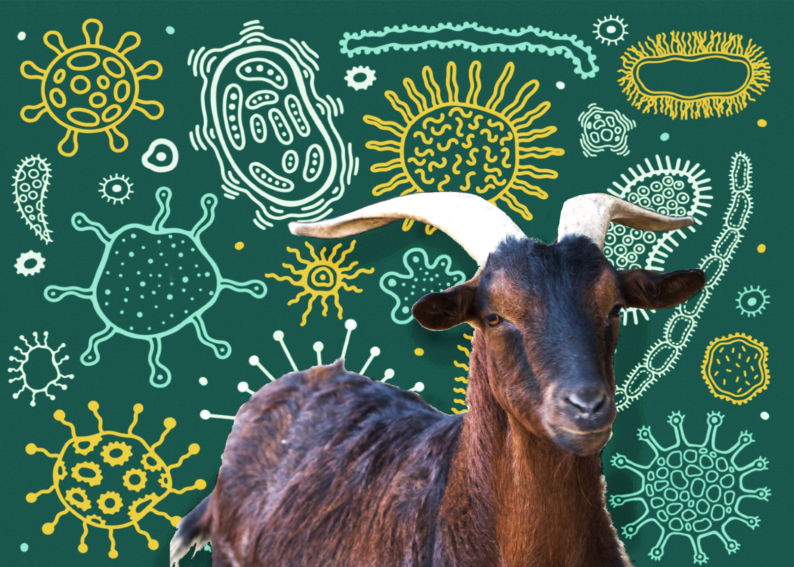Microbes found in the goat gut microbiome could help humans convert plant material into valuable, eco-friendly commodities
By Aliyah Kovner
Converting the tough fibers and complex sugars in plants into biofuels and other products could be humanity’s ticket to smarter materials, better medicines, and a petroleum-free, sustainable future. But harnessing the chemical commodities stored in these molecules is no simple task. We may take it for granted because our bodies seem to do it automatically, but in reality, every time we eat a vegetable or leafy green, the microbial communities living inside of us are performing an elaborate disassembly line of coordinated chemical reactions to break the plant matter into simple sugars that human cells can use.
Hoping to discover new and improved ways of processing plant material for industrial purposes, scientists like Michelle O’Malley at UC Santa Barbara (UCSB) and the Joint BioEnergy Institute (JBEI) have been studying the gut microbiomes of the planet’s most prolific herbivores: ruminant animals such as goats.
“The digestive tract of ruminant animals is populated with numerous microbes, including fungi, which evolved for millions of years to perform vital chemistry more effectively than we can in a lab,” said Igor Grigoriev, a senior scientist and Fungal Program Head at the U.S. Department of Energy Joint Genome Institute (JGI). “Eventually, we want to use these processes to convert plant material into products humans need that are currently in limited supply.”
Grigoriev and other Berkeley lab scientists contributed to O’Malley’s latest study, published in Nature Microbiology. The team generated reconstructions of the many thousands of microbial genomes present in goat-poop samples – taken from a Santa Barbara Zoo resident named “Elway” – and helped identify genes for metabolic enzymes and other digestion-related proteins.
The work revealed 700 previously unknown microbial species, and also highlighted the importance of anaerobic fungi in the goat gut.
According to O’Malley, her team had previously discovered the presence of a small minority of fungal species among the gut’s cornucopia of bacteria, but they did not realize what an outsize role these organisms play.
“Fungi produce the lion’s share of the biomass degrading enzymes that the microbial community relies on to function,” O’Malley noted in a UCSB news release.
The team’s ultimate goal is to develop an artificial version of an herbivore microbiome, cultured in a bioreactor, that could be used to perform the complex chemistry needed to break down plant matter on an industrial scale
This Science Snapshot was originally published on the Berkeley Lab News Center.
